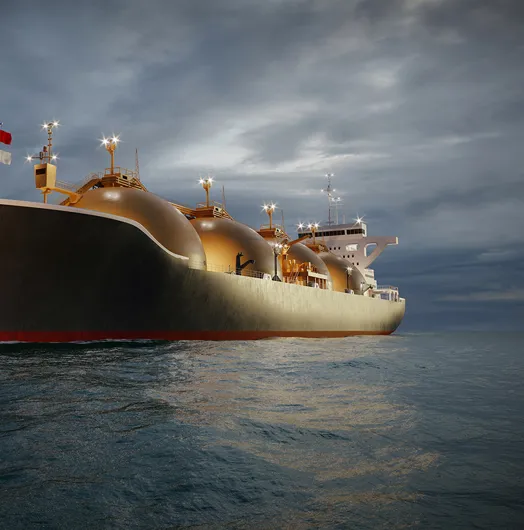In this article we examine the macro aspects of CO₂, taking a reality check on the scale of carbon emissions, the potential to deal with them, and permanent storage solutions.

While global data regarding CO₂ emissions is partly incomplete, and occasionally inconsistent, the estimated figures used in this article provide a valuable, general guide to scale.
Estimated CO₂ figures for 2021 show there are over 35 billion mt of CO₂ emissions each year, with just 0.1 per cent of these permanently stored. While today’s shipping trade, primarily for the food and drinks industries, will contribute further CO₂ emissions to this estimate, overall shipping represents an insignificant fraction of the total figure.
Do we have the capacity to store all of this?
On the face of it, the scale of the challenge to decarbonise the atmosphere is virtually incomprehensible. While data remains difficult to verify, it is estimated that global CO₂ storage capacity is somewhere between 8,000 billion and 55,000 billion mt. Arguably, there is more capacity than that which we could hope to use in the next 50 years, given the efforts to reduce emissions whilst at the same time permanently storing. Indeed, many industrialists now talk about carbon-negative policies, not just carbon-zero.
Where is this storage located?
Contrary to popular opinion, only around 3 per cent of global storage is in disused or depleted oil and gas fields. Most storage is, in fact, found in naturally occurring saline aquifers. The majority of current capabilities are inland, providing between 6,000 billion and 42,000 billion mt of storage. The remainder is offshore, offering between 2,000 billion and 13,000 billion mt of CO₂ storage.
Is permanent storage secure?
There is no ‘one size fits all’ answer to this question. Depending on its industrial origin, CO₂ waste is likely to contain contaminants and the specification of the CO₂ may affect how well it can be stored. It is also worth noting that because of the differences in storage site formation, scale and depth, the individual suitability of sites may also vary.
Given the complexity of the subject, more detailed insight is firmly in the remit of geophysicists and scientists. Having said that, deep storage is generally understood to be secure as long as the appropriate surveys are carried out in advance (to establish capacity and determine whether the rock formations are able to store safely long-term) and the risk of seepage eliminated.
Clarksons’ specialist experience within liquid CO₂ transportation
The Clarksons Gases team is firmly established at the heart of the global gas markets with an unrivalled track record in providing shipping and trade-related services for LPG, ammonia, petrochemical gases, and LNG. We are determined to become equally proficient in the emerging, seaborne CO₂ business and have formed a specialist team within Gases department.
The specialist team continues to work closely with other divisions within Clarksons to ensure we remain at the forefront of developments in the sector. Our knowledge base on CO₂ has increased significantly and we are confident of being able to assist you with your CO₂ projects and shipping strategy.
Contact the liquid CO₂ transportation team.
Meet the team





